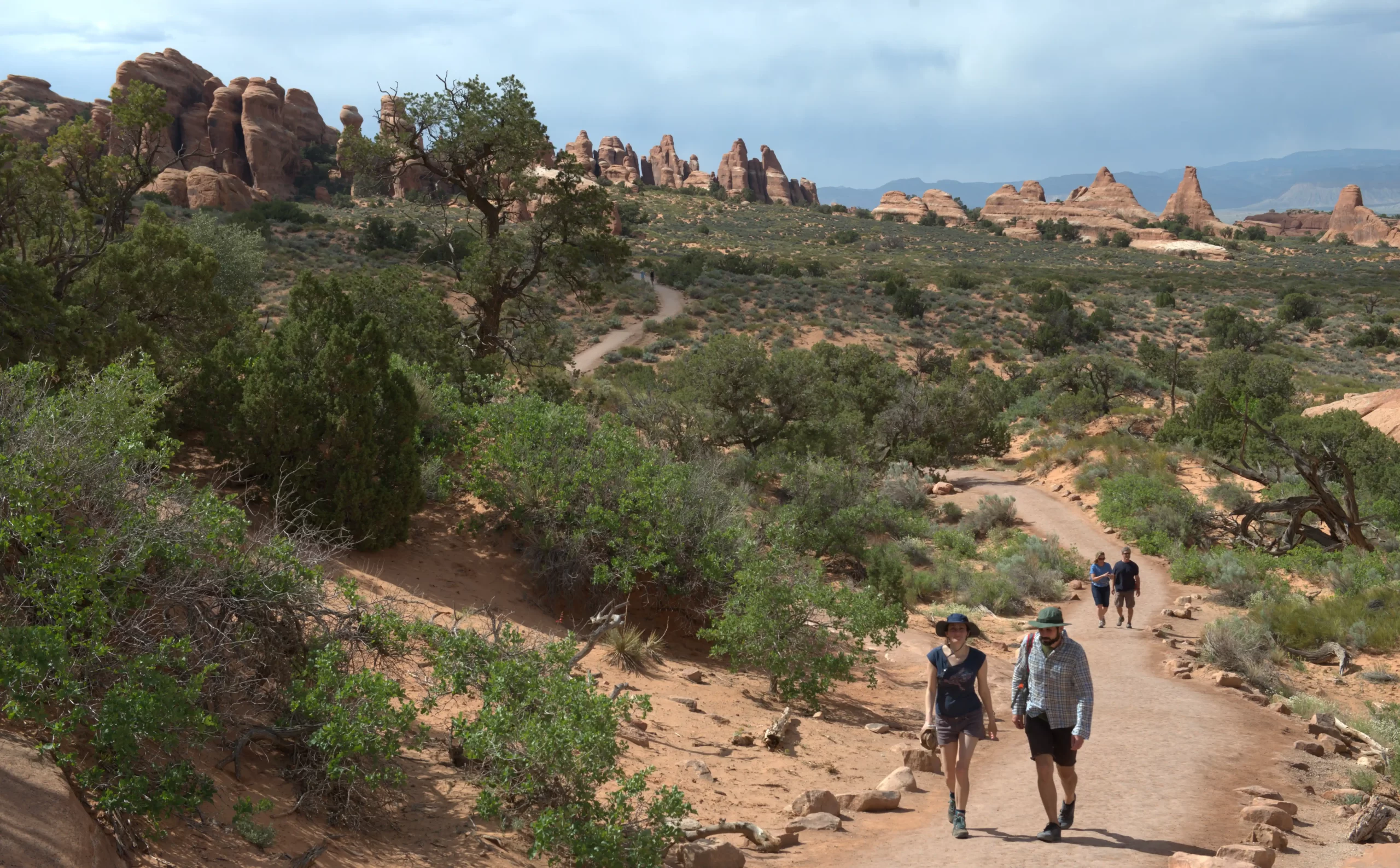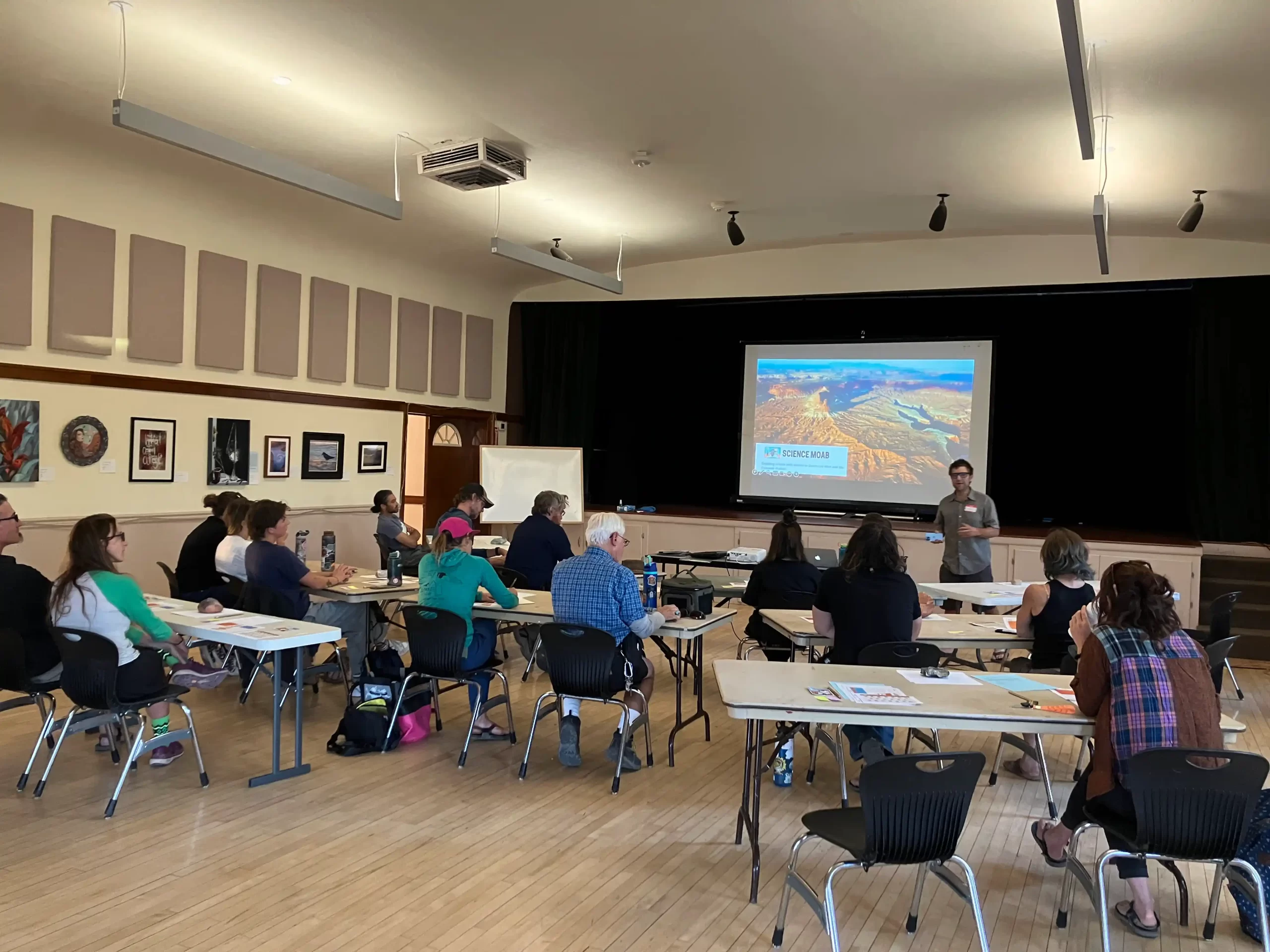“Why do we want to leave our mark?” asked Tara Beresh, the Moab Museum’s curatorial and collections manager.
It’s a very human thing to do, she said: nowadays, people wanting to leave their mark may use location tags on social media but, historically, visitors to the Moab area would leave inscriptions on sandstone, boulders, and trees to tell each other where they had been and what they had done there.
The museum’s upcoming exhibit, “Butch Cassidy Was Here: Historic Inscriptions of the Colorado Plateau,” will explore the idea of marking memories through the work of two friends, James Knipmeyer, and the late Mike Ford, who cataloged the inscriptions and the history of the Colorado Plateau through photographs and literature.
The two first visited the Colorado Plateau area in the 1960s, when they visited the Grand Canyon. In 1976, Knipmeyer set a goal to locate and photograph “all the historic inscriptions left before 1900 in the Colorado Plateau region of southern Utah and northern Arizona,” according to the museum. The collection is now comprised of over 1,600 images of these inscriptions and their stories.
The exhibit will also pay homage to Ford, who died in 2015, and Skip Doty, who entrusted Ford’s collection of Colorado Plateau literature to the museum. In addition to collecting books, Ford was a photographer: his landscape photographs will be displayed to show his and Knipmeyer’s travels through the region. A few items that Knipmeyer and Ford brought on their adventures will also be on display.
“Ford, Knipmeyer, and Doty, all collectors of history, embody the curiosity of the human spirit and common desire to connect with the land, its history, and its people—past, present, and future,” reads the museum’s description of the exhibit.

The exhibit also connects to “many different chapters of history and so many different journeys that have transpired on this landscape,” said Community Outreach and Membership Coordinator Mary Langworthy.
The inscriptions the museum will display include those from Indigenous people, ranchers, fur trappers, outlaws, Spanish explorers, missionaries from the Church of Jesus Christ of Latter-day Saints, and markings left by the iconic bank robber Butch Cassidy.
“I describe it as a collage of stories and people and journeys, all from different times, that all overlap on the landscape,” Langworthy said. The exhibit will invite visitors to reflect on those peoples’ lives, and “their reasons for leaving messages for those who come after,” the exhibit description says.
The inscriptions will show more than just names and dates—some also expressed sentiments of the time, Beresh said, and are written in multiple languages.
“It speaks to a different place in time, where people were dealing with real issues between different groups that were vying for the same land or the same water rights,” she said. “It’s a pivotal story about history.”
Beresh worked closely with Knipmeyer to choose which inscriptions and stories should go on display. The exhibit draws largely from Knipmeyer’s book of the same name as the exhibit, Beresh said.
“The exhibit is all about inscriptions, but it’s also highlighting the experience of these two best friends traipsing all around on these same paths that we do, to find all of this stuff,” Langworthy said. “They were adventuring and amassing their collections. It’s something people can relate to.”
The exhibit will be on display at the Moab Museum (118 E. Center Street, Moab) through August.





